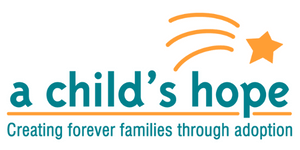Transracial adoption, also called interracial adoption, is any adoption in which the adoptive parents and child are of different races. Interracial adoption placements are becoming increasingly common as more families embrace diversity and more expectant mothers choose to place their babies with waiting families of another race.
For families who have adopted a child of another race, ethnicity or culture, transracial adoption is an incredibly rewarding and fulfilling experience. However, there are some considerations every family should take into account when deciding whether to adopt interracially.
A Child’s Hope works with adoptive families and birth parents of all races and backgrounds. Learn more about Hispanic, Asian, Caucasian, Native American and African American adoption below.
Diverse Birth Mothers Seek Diverse Adoptive Parents
In addition to transracial adoptive families, many expectant mothers are seeking adoptive parents who share their racial, cultural or ethnic background.
For example, we are currently working with several African American women who wish to make an adoption plan. Although many of them are very open to placing their children with non-African American families, many have asked us to provide them with choices of African American and interracial waiting families who want to adopt a black or interracial baby.
If you are an African American or biracial family, please contact A Child’s Hope to learn more about our adoption programs. We expedite the adoption home study and profile production process for families of color.
There is currently a strong need for families of all races to adopt African American children. If you are interested in African American infant adoption, regardless of your race, please ask your adoption counselor for more information about transracial adoption.
What You Need to Know About Transracial and Interracial Adoption
In many ways, raising a baby of a different race is no different than parenting children who share your racial background. However, if you are adopting cross-culturally, it is important to consider some of the unique experiences of multiracial families:
- You will need to help your child develop his or her cultural identity. It is important to honor your child’s heritage and incorporate elements of his or her race and culture into your family life. Consider celebrating traditional holidays, listening to music and cooking special dishes from your child’s birth culture.
- Your child may have unique needs. Keep in mind that people of different races sometimes have different physical and medical needs. For example, African American hair requires different care than Caucasian hair. Recognize and embrace your physical differences and address your child’s specific needs.
- You should be prepared to talk about racial issues. You will need to be prepared to confront issues like racism, cultural identity and transracial adoption head-on. As your child gets older, you will need to give him or her plenty of opportunities to discuss these issues with you.
- You should surround your family with as much diversity as possible. Seek out diverse neighborhoods, school communities, churches and other activities for your child. Attend cultural events and give your child an opportunity to interact with peers and adults of his or her race, as well as many other races.
Families should research these and other transracial adoption issues carefully before deciding what types of adoption opportunities they are open to. It is up to each family to evaluate transracial adoption pros and cons, as well as their own readiness to parent a child of another race.
Transracial Adoption with A Child’s Hope
The more open and flexible you are to a variety of adoption situations, including babies of many different cultural and racial backgrounds, the shorter your adoption wait time will be.
Your adoption counselor will talk to you about transracial adoption and provide reading materials if you are interested in learning more about interracial adoption and parenting. We can also put you in touch with other families who have adopted cross-culturally, so you can learn more about the transracial adoption process and the experience of raising a child of another race.
